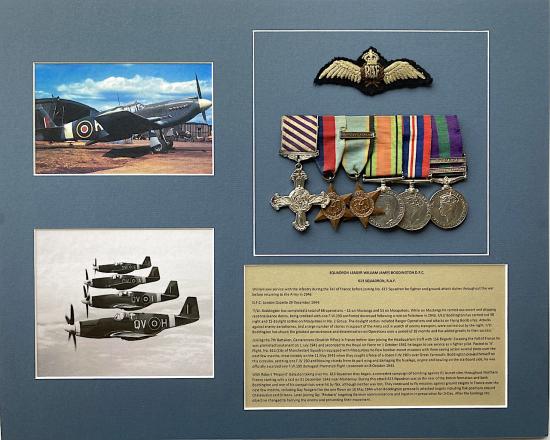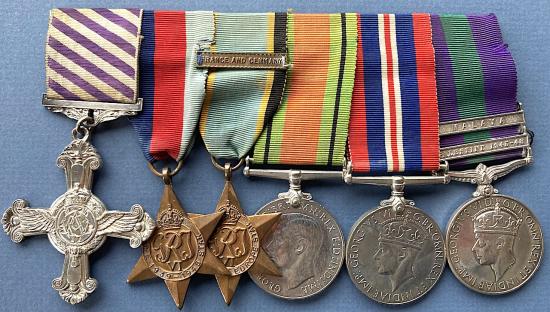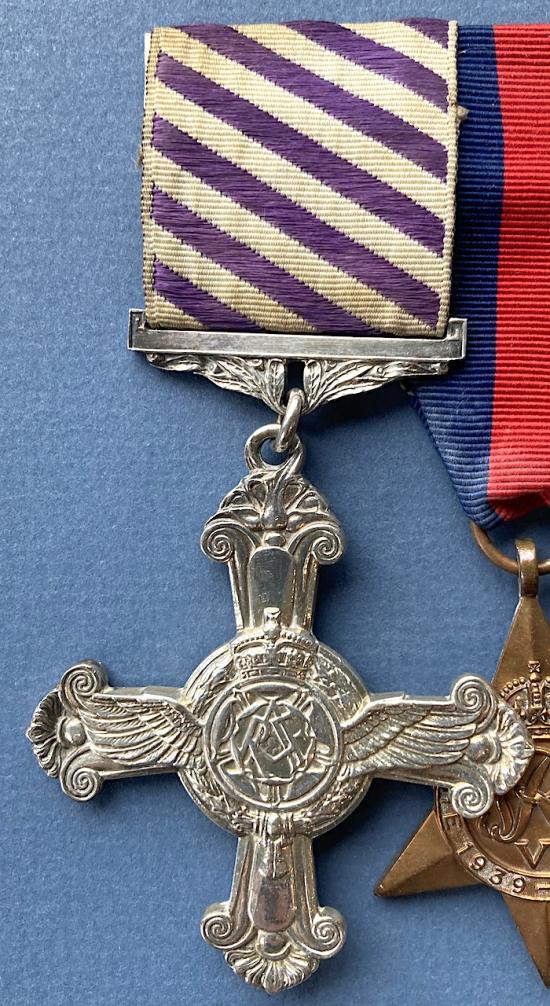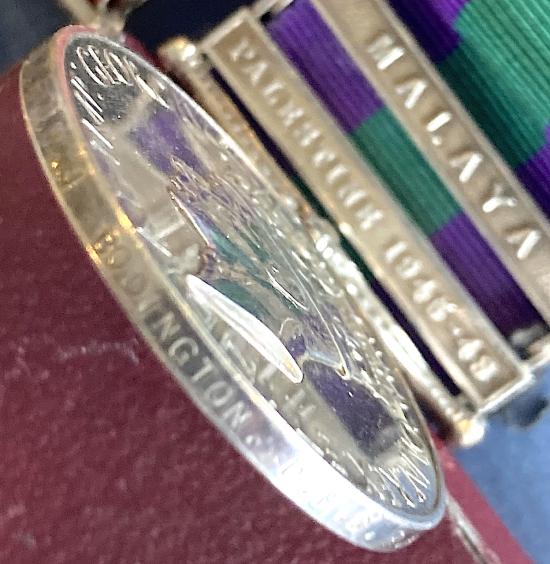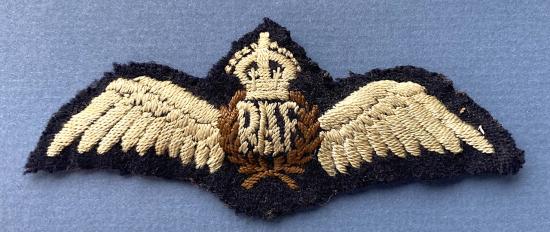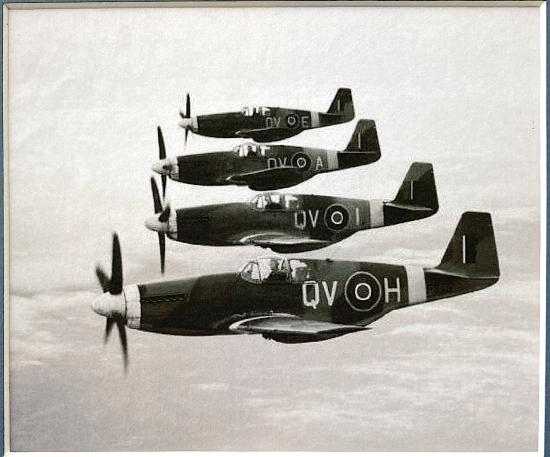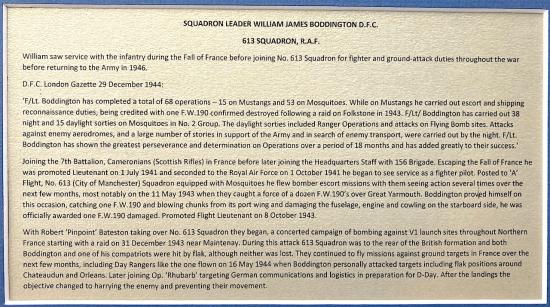WW2 RAF FIGHTER PILOT DFC GROUP TO S/LDR W.J. BODDINGTON
WW2 RAF Fighter Pilot Distinguished Flying Cross Group of 6 to Squadron Leader William James Boddington D.F.C., 613 Squadron, R.A.F.
The ‘Operation No-Ball 1944’ D.F.C. group of six awarded to Squadron Leader W. J. Boddington, Royal Air Force, late Major in the Cameronians (Scottish Rifles), who saw service with the infantry during the Fall of France before joining No. 613 Squadron for fighter and ground-attack duties throughout the war before returning to the Army in 1946.
Distinguished Flying Cross, G.VI.R., reverse officially engraved '1944'; 1939-45 Star; Air Crew Europe Star, clasp, France and Germany; Defence and War Medals 1939-45; General Service 1918-62, 2 clasps Palestine 1945-48, Malaya (correctly named Sqn. Ldr. W. J. Boddington. D.F.C. R.A.F.), mounted as worn, overall contact wear, nearly very fine.
D.F.C. London Gazette 29 December 1944, the original recommendation states: ‘F/Lt. Bodington has completed a total of 68 operations – 15 on Mustangs and 53 on Mosquitoes. While on Mustangs he carried out escort and shipping reconnaissance duties, being credited with one F.W.190 confirmed destroyed following a raid on Folkstone in 1943.
F/Lt/ Bodington SIC has carried out 38 night and 15 daylight sorties on Mosquitoes in No. 2 Group. The daylight sorties included Ranger Operations and attacks on Flying Bomb sites. Attacks against enemy aerodromes, and a large number of stories in support of the Army and in search of enemy transport, were carried out by the night. F/Lt. Bodington SIC has shown the greatest perseverance and determination on Operations over a period of 18 months and has added greatly to their success.'
William James Boddington was born at Birmingham on 30 March 1921, the son of P. J. Boddington, a Surgeon who saw service in the Second Boer War and later as a Surgeon Captain with the Royal Horse Guards during the Great War, being wounded on 5 October 1915 in that capacity.
The younger Boddington was educated at Haileybury and the Royal Military Academy, Sandhurst being Commissioned 2nd Lieutenant with the Cameronians (Scottish Rifles) on 30 December 1939, making him among of the last batch of Pre-War regulars. Joining the 7th Battalion, Cameronians (Scottish Rifles) in France before later joining the Headquarters Staff with 156 Brigade.
Escaping the Fall of France, he was promoted Lieutenant on 1 July 1941 and seconded to the Royal Air Force on 1 October 1941 he began to see service as a fighter pilot. Much of 1942 was spent training with one notably incident occurring on 15 December 1942 during a formation flying exercise on Mustangs. With the formation lost in deep fog and running low on fuel Boddington broke formation and attempted to land on Fountains Earth Moor, Nidderdale, unfortunately the terrain made that impossible so with the last of his fuel he climbed to a safe hight and bailed out. A search party was organised, and he was met by his would-be rescuers walking calmly down the road into Nidderdale, none the worse for wear. Posted to ‘A’ Flight, No. 613 (City of Manchester) Squadron equipped with Mosquitoes he flew bomber escort missions with them seeing action several times over the next few months, most notably on the 11 May 1943 when they caught a force of a dozen F.W.190’s over Great Yarmouth. Boddington proved himself on this occasion, catching one F.W.190 and blowing chunks from its port wing and damaging the fuselage, engine and cawling on the starboard side, he was officially awarded one F.W.190 damaged. Promoted Flight Lieutenant on 8 October 1943. With Robert ‘Pinpoint’ Bateston taking over No. 613 Squadron they began, a concerted campaign of bombing against V1 launch sites throughout Northern France starting with a raid on 31 December 1943 near Maintenay. During this attack 613 Squadron was to the rear of the British formation and both Boddington and one of his compatriots were hit by flak, although neither was lost.
They continued to fly missions against ground targets in France over the next few months, including Day Rangers like the one flown on 16 May 1944 when Boddington personally attacked targets including flak positions around Chateaudun and Orleans. Later joining Op. ‘Rhubarb’ targeting German communications and logistics in preparation for D-Day. After the landings the objective changed to harrying the enemy and preventing their movement. Flying for the rest of the war Boddington reached the rank of Squadron Leader and with the award of his D.F.C. it seems despite his success he preferred Army service. His obituary notes one occasion on which he was shot down and ‘had to face a Court of Inquiry, not for the loss of a valuable aeroplane, but for failing retrieve his parachute’.
Seeing further service in Malaya and Palestine he was later promoted Captain with the 1st Battalion Cameronians (Scottish Rifles) on 2 July 1946 he saw service at Gibraltar and Triesle and was further advanced Major on 31 July 1952. He saw more service in Germany, Bahrain and Kenya. Boddington died in 1985, at his Funeral the Cameronians were represented at the Funeral by Major-General F. K. G. Sixsmith. Comes together with a set of flying wings as well as copied research including census data, London Gazette entries and extracts from Mosquito and 2 Group History as well as a recommendation for award, Operations Record Book for 613 Squadron and a copied obituary.
Code: 50242
8500.00 NZD

